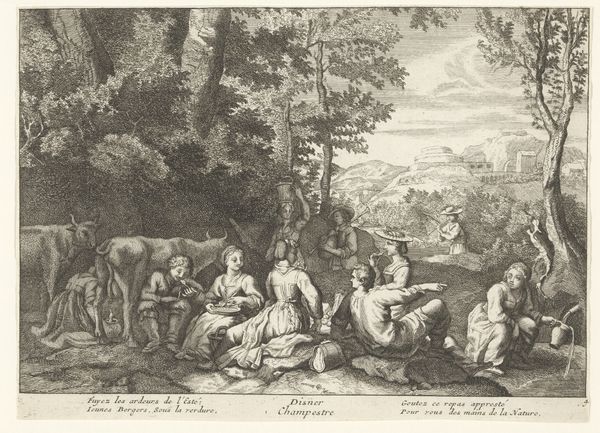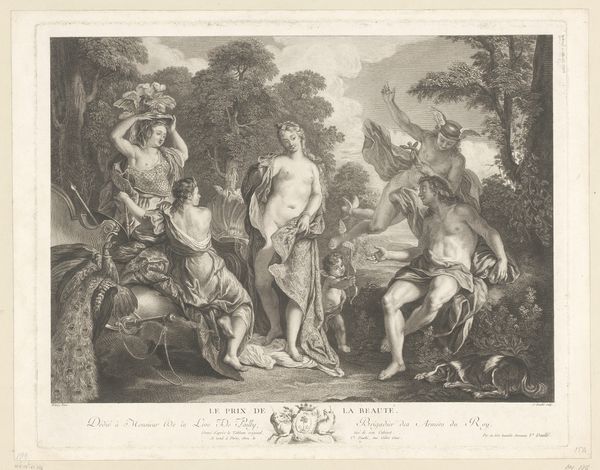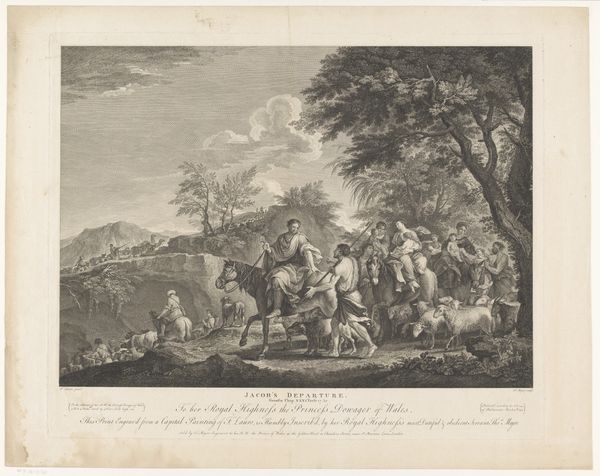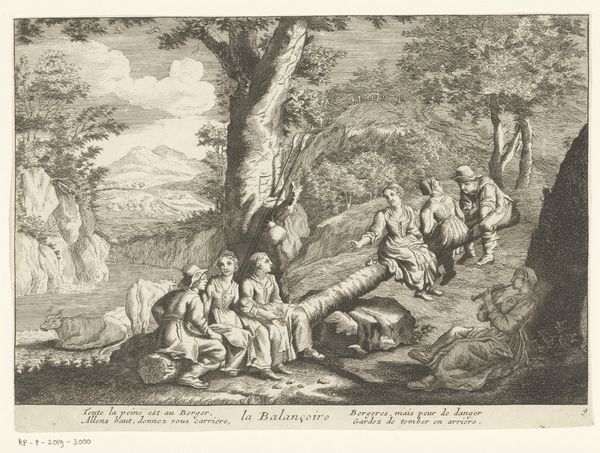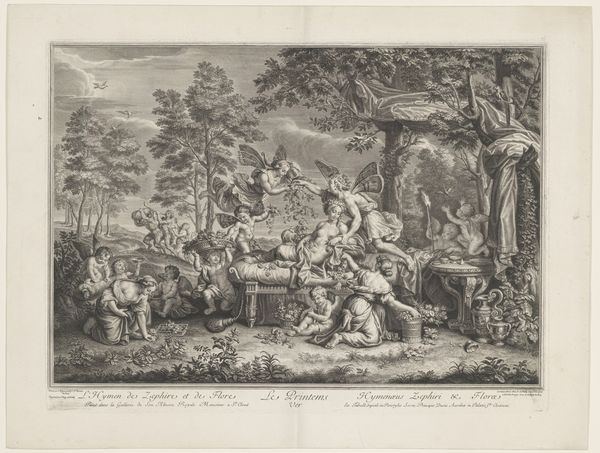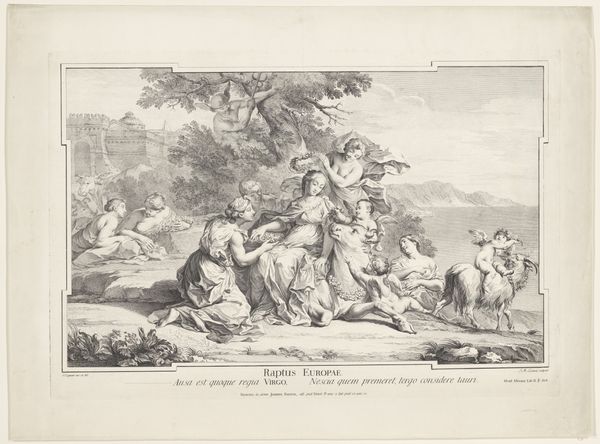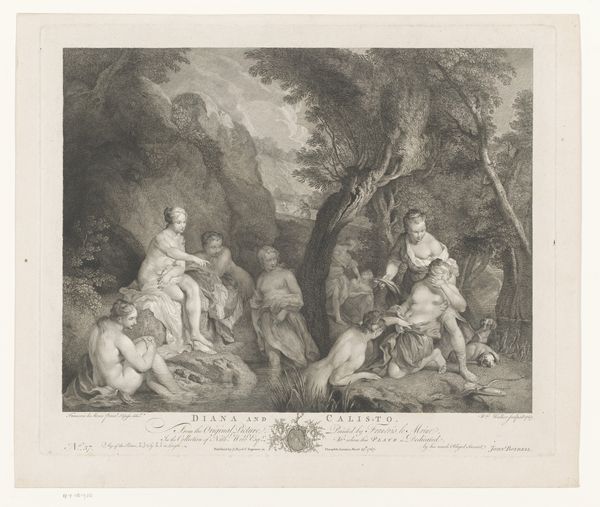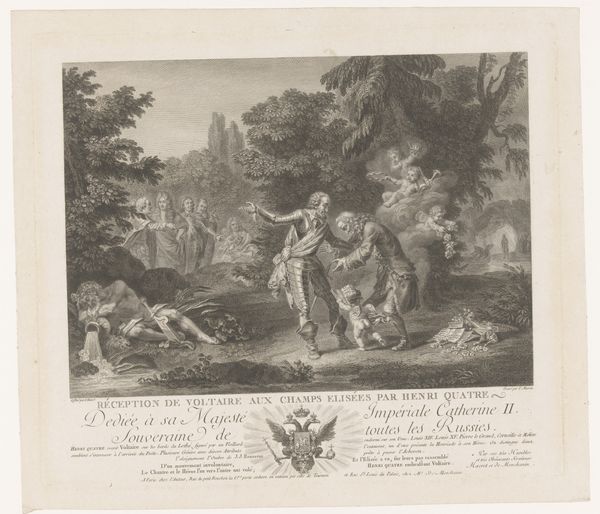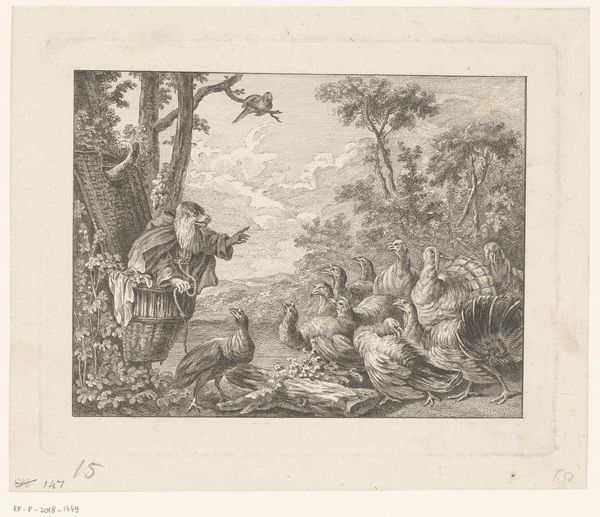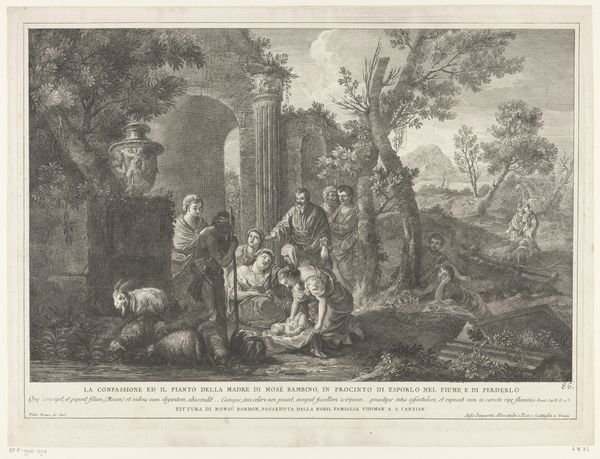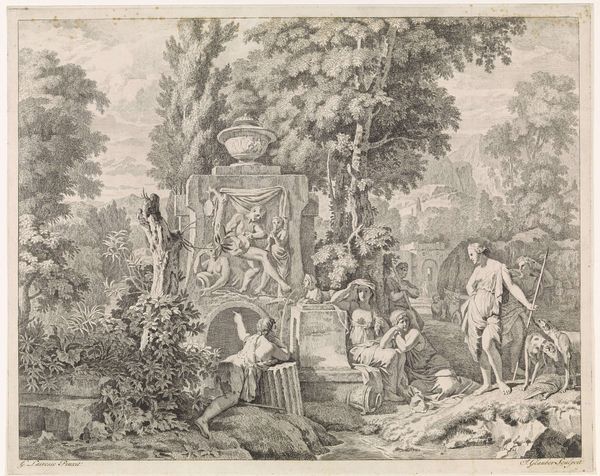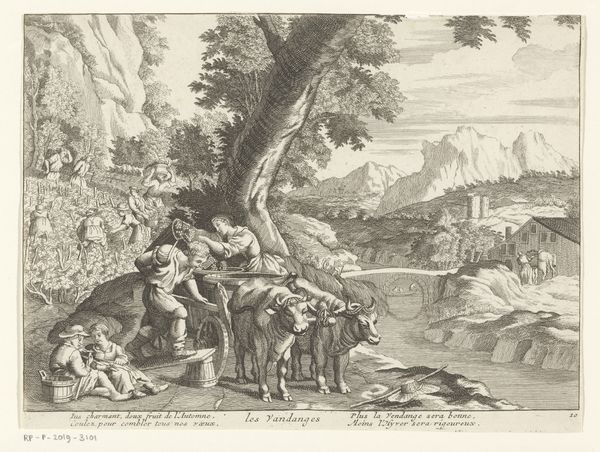
print, engraving
#
baroque
# print
#
old engraving style
#
landscape
#
figuration
#
genre-painting
#
history-painting
#
engraving
Dimensions: height 354 mm, width 433 mm
Copyright: Rijks Museum: Open Domain
Editor: Here we have Etienne Fessard’s engraving, "Children of Bacchus with Goat," created sometime between 1724 and 1777. It's quite striking, a lively scene filled with playful figures and a certain bucolic charm. How would you interpret the imagery presented here? Curator: It's interesting to consider how Fessard translates Watteau’s painting into this engraved format. The symbols of Bacchus, or Dionysus, the god of wine and revelry, are fascinating. The putti, the goat, even the grapes—they all speak to themes of abundance, fertility, and a kind of untamed joy. Notice how the image seems to dance between order and chaos. What do you think that tension might represent? Editor: Perhaps it's a reflection of the duality inherent in Bacchus himself – the god of both ecstatic liberation and drunken madness? Curator: Precisely. Consider, too, the broader cultural context. This print, like Watteau's painting, emerged during the Baroque period, a time of elaborate ornamentation and dramatic flair. The image invites us to consider cultural memory. Bacchus and his symbols connect to the distant past, with meanings resonating into the present. The enduring fascination with figures like Bacchus suggests a deeply rooted need for moments of ecstatic release from the confines of daily life. What is it about these classical stories that we return to, time and again? Editor: I suppose they represent something fundamental about the human experience, these timeless desires for pleasure, freedom, and connection. Curator: Indeed. And the genius of artists like Watteau and Fessard lies in their ability to translate these age-old yearnings into images that continue to resonate with us centuries later. Editor: This makes me appreciate the rich symbolism within such a playful scene; I’m taking away a new understanding of cultural persistence. Curator: And I, how images continue to function as dynamic containers of collective experience and unconscious desire.
Comments
No comments
Be the first to comment and join the conversation on the ultimate creative platform.
